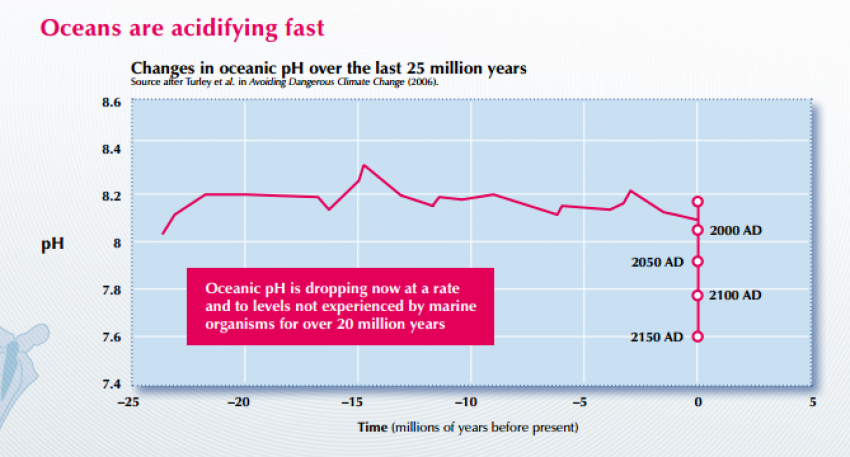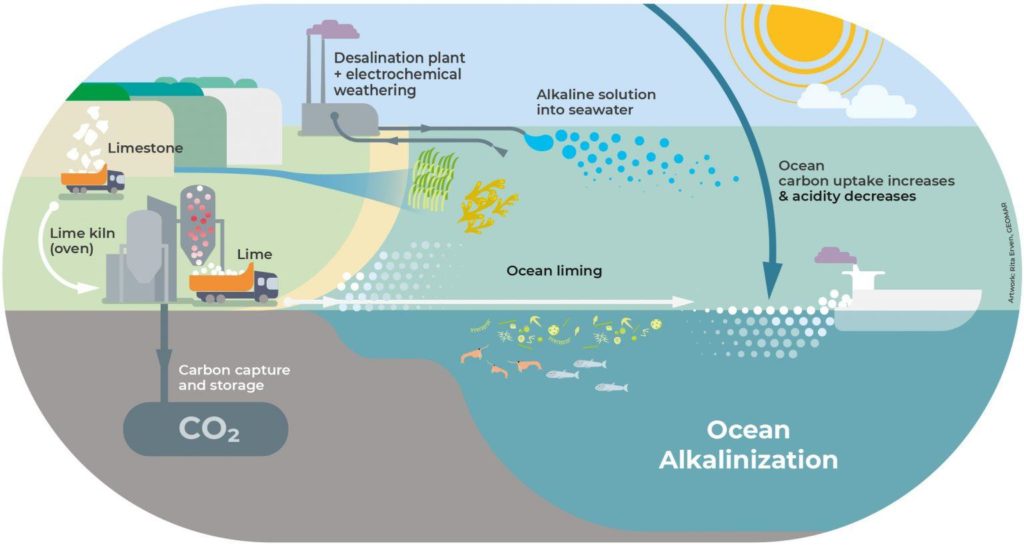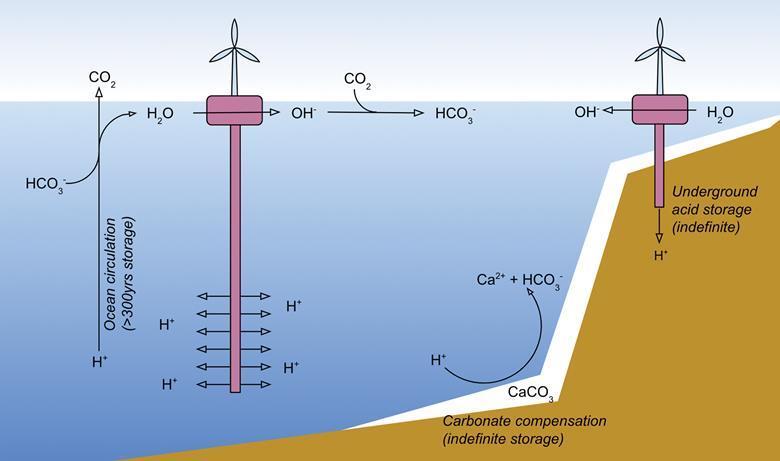Is Ocean Acidification Reversible?
Ocean acidification occurs when the pH level of seawater decreases. This is most frequently caused by the ocean absorbing excess CO2 from the atmosphere, which increases as humans contribute more carbon to the atmosphere.
Ocean acidification has severe impacts on marine ecosystems, marine wildlife, and humans. While some researchers argue that ocean acidification can still be reversed to avoid these negative consequences, others disagree.
This article will examine the varying perspectives of experts and researchers on whether ocean acidification is reversible. We will also discuss proposed methods of reversal and the consequences we might face if we fail to reverse ocean acidification.
Background information: Ocean Acidification Infographic
Table of Contents
Ocean Acidification: Is It Really Reversible?
Different Scientific Methodologies On How to Potentially Reverse Ocean Acidification
Future Impact of Ocean Acidification if Not Reversed
Future Impact on People and the Economy
Future Impact on Marine Life and Ecosystems
Is Ocean Acidification Reversible? The Debate
Ocean acidification began in the Industrial Revolution of the 19th century, and has been damaging marine life and ecosystems for centuries now. Today, ocean acidification continues to worsen. Experts in the field are working to identify whether it’s possible to return the ocean’s pH level, or acidity level, to its former condition in the pre-industrial period. In other words, scientists want to know: is ocean acidification reversible?
A Pessimistic Stance
The Secretariat of Convention of Biological Diversity (CBD) introduced a study in 2009 that focused on the impacts and trajectory of ocean acidification. The study collected 300 scientific reports related to ocean acidification and predicted that ocean acidity may increase by 150% by 2050. This increased acidity will likely cause irreversible damage to marine life and ecosystems. According to a 2009 press release, CBD Executive Secretary Ahmed Djoghlaf stated that “Ocean acidification is irreversible on timescales of at least tens of thousands of years.” This suggests that even with significant interventions, fully reversing ocean acidification will be impossible for our generation and beyond.
This difficulty in reversing acidification is due to the unprecedented speed with which ocean acidification has occurred; post-Industrial Revolution acidification happened 100 times faster than any previous change in acidity over the past 20 million years. Marine organisms and ecosystems are unable to adapt to increased acidity quickly enough, making it difficult to address or reverse.

Source: IUCN
Another study was released in 2015, conducted by Germany’s Potsdam Institute for Climate Impact Research. The research focuses on Carbon Dioxide Removal (CDR) methodologies, which utilize technologies to boost the removal of atmospheric CO2, with the goal of reversing ocean acidification to pre-industrial levels. However, the researchers concluded that even if we achieve a 25 gigatons annual CO2 reduction through CDR, ocean acidification will be impossible to reverse to its pre-industrial condition until the year 2700.
Essentially, even after several centuries of carbon removal, oceans will still show the effects of current acidification.
An Optimistic Stance
In 2013, scientists from Lawrence Livermore National Laboratory conducted an experiment where they designed a sequestration method that works to absorb atmospheric CO2, create clean hydrogen fuels and release carbonate and bicarbonate, which improves alkalinity. The goal of this method is to increase alkalinization, or the chemical process of neutralizing acids to stabilize ocean acidity, in order to reverse acidification.
Another similar study released in 2016 focused on how to reduce ocean acidity through the introduction of an alkaline solution. Rebecca Albright of Stanford University and her team conducted an ocean alkalinization experiment in a series of isolated lagoons surrounded by One Tree Reef, a portion of the southern Great Barrier Reef. The team developed a chemical solution made with a mixture of seawater, dye, and sodium hydroxide, which served as the alkaline (acid-neutralizing) solution that was deposited over the reef of the isolated lagoons. The experiment shows that changes in water chemistry through alkalinization successfully lower ocean acidity, and improve coral development.
However, the study suggests that ocean alkalinization alone is insufficient to reverse ocean acidification, and that in order to reverse ocean acidification fully, it is necessary to address excessive carbon emissions as well. While reversing ocean acidification may be part of a solution, reducing carbon emissions would address the root of the problem. This is why some argue that ocean acidification is reversible only if it is included in political initiatives that promote a wide reduction of carbon emissions.
Another study was released in 2021 that focuses on enhancing ocean alkalization by introducing experiments on a much larger scale: this time, to the whole Great Barrier Reef. In the experiment, 90,000 tons of alkaline solution were deposited into the Great Barrier Reef every three days for one year. The results reveal that the concentration of carbonate ions increased along the reef, a key indicator of ocean acidity levels. In fact, the experiment successfully reversed acidity levels to the conditions that existed four years ago, indicating that ocean acidification can be reversed on small scales or in small amounts, even if conditions cannot be returned to the pre-industrial conditions of 100 or more years ago. This is promising, as even if we cannot return the ocean to its original state, we may be able to stop the worst of ocean acidification’s effects from taking place.
Scientific Strategies to Reverse Ocean Acidification
Scientists and experts around the world have been studying ocean acidification and how to counter it for decades now. Several scientific methodologies that aim to reverse ocean acidification, including those mentioned above, have already been introduced. Here’s an overview of the methodologies and research that are being considered to reverse ocean acidification.
Enhanced Chemical Manipulation
One of the main methods scientists are researching to reduce ocean acidification is chemical manipulation. This includes ocean alkalization, or introducing a chemical source of alkaline to the seawater in order to stabilize the acidity levels. This method is believed to reduce ocean acidification at the local scale.

Source: Ocean Nets
Carbon Emission Reduction
Because the cause of ocean acidification is the ocean’s absorption of excess CO2 from the atmosphere, one of the main strategies to alter increasing ocean acidification is to reduce carbon emissions globally. This could come through different climate-friendly initiatives and government policies, including but not limited to:
- Switching to renewable energy sources
- Implementation of carbon taxes
- Driving low carbon vehicles, or using electric vehicles
- Using bicycles and low-carbon forms of transport more often
- Using energy-efficient appliances
- Planting more trees
Surface Acidity Pumping
Several recent studies have suggested addressing ocean acidification with surface acidity pumping, the use of electrochemical pumping to relocate surface seawater acidity to the depths of the ocean. This method decreases the acidity level of the surface seawater by bringing up alkaline water from the bottom of the ocean, and then relocating surface acidity to the bottom. This strategy not only controls ocean acidification and benefits coral reefs’ health, but also allows the ocean to capture more atmospheric CO2, which may help to mitigate global warming.

Source: Energy & Environmental Science Tyka et al. 2022
Read more about this strategy: Researchers propose controlling ocean acidity to lower atmospheric carbon dioxide
Future Impacts of Ocean Acidification if Not Reversed
If the current rate of ocean acidification is not reversed, it will have a detrimental effect not just on the environment, but also on the global community. Here are some examples of how ocean acidification will affect humans, the economy, marine species, and ecosystems in the future.
Impact on People and the Economy
Impact on the Aquaculture Industry
Ocean acidification affects the development and survival of shell-forming marine animals, including oysters, clams, mussels, and many more. This variety of marine animals is widely produced, farmed, and consumed on the global seafood market. With these animals at risk, the shellfish and seafood market might collapse, which may cause job loss and economic fallout, especially in countries and regions that rely on shellfish farming.
Other fish may also be hard to find on the market as an indirect result of ocean acidification. Salmon and tuna, for example, are two of the most popular seafoods on the market. These fish rely on other smaller fish for food, such as sardines and anchovies. These smaller fish feed mostly on phytoplankton, which is one of the organisms most severely affected by ocean acidification. The imbalances ocean acidification creates in the ocean food chain have an impact on the survival of these popularly-marketed fish. If ocean acidification continues to worsen, much of the seafood that we not only enjoy, but also that generates income and employment and contributes to the economy may not be available decades or centuries from now.
Impact on the Tourism Industry
The tourism industry is one of the largest contributors to the world economy, but it is also threatened by ocean acidification’s impacts. For example, coral reefs attract tourists, which generates $36 billion for the global economy annually. Many regions rely on coral reefs to generate employment and business. Unfortunately, ocean acidification is already causing massive coral deaths in different parts of the world. If ocean acidification is not reversed, coral population declines will continue, which may create a negative effect on the tourism sector, resulting in job losses and business closures that will negatively impact the people that rely on them.
Impact on Marine Life and Ecosystems
Experts, researchers, and scientists have shown that ocean acidification is already creating detrimental impacts on different marine life and ecosystems. This includes the following discoveries:
- Ocean acidification is negatively affecting the population and development of phytoplankton and diatoms.
- Ocean acidification makes it difficult for coral to build their skeletons, which creates an ecological imbalance, and a non-habitable environment for reef fish species.
- Ocean acidification negatively affects the capabilities of shell-forming marine species, such as clams, sea urchins, oysters, and mussels, to grow and develop their shells, making them more vulnerable.
- Ocean acidification negatively affects salmon’s sense of smell and ability to detect danger.
All of the scientific discoveries listed above threaten the affected species, and may even lead to an increase in their mortality rate in the long run. Experts are concerned that if we do not stop or reverse ocean acidification, we may witness a repetition of the historical mass extinction that occurred 66 million years ago, when 75% of marine species became extinct due to an overly acidified ocean. If this happens in the future, the damaging impact of this may not only affect the marine life and ecosystem but all life on earth.
Key Takeaways
The possibility of reversing ocean acidification is uncertain. The main arguments can be summarized into three categories:
- Some argue that ocean acidification is not reversible (especially not to pre-Industrial Revolution levels).
- Some argue that we can slow ocean acidification down, but not reverse it completely.
- Some argue that it is scientifically feasible to reduce acidification at least enough to avoid catastrophic consequences.
While ocean acidity levels likely cannot be returned to pre-Industrial Revolution levels, ocean acidification can be reduced on local scales to the acidity conditions of a few years ago (which is still a much-needed improvement).
Experts are working to find strategies to make this possible, although many of these strategies have not been tested on a larger scale. But one thing is certain about the question, is ocean acidification reversible: Reducing or reversing ocean acidification requires a global unified effort to reduce carbon emissions. If we succeed in achieving this, then the answer might be yes.